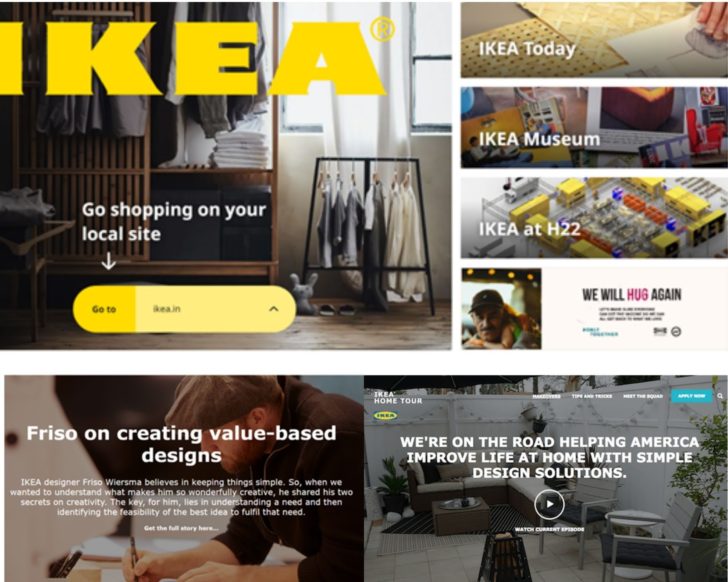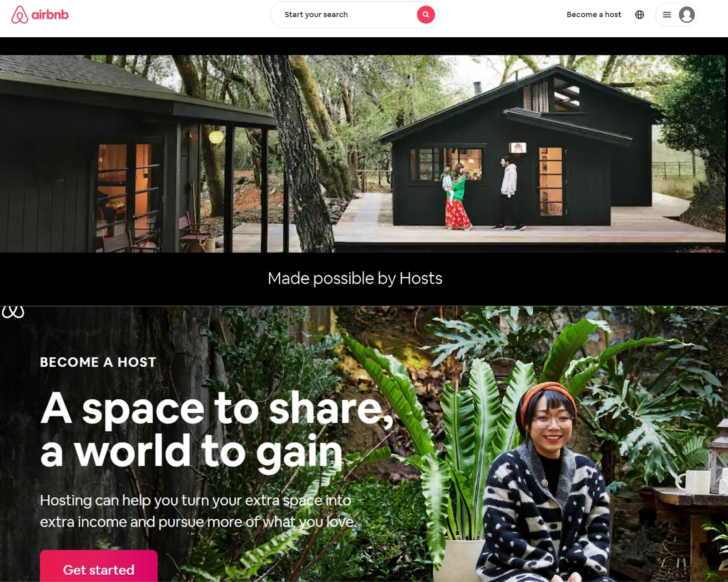User Experience for SEO: how much it weigh and how to take care of it
As we were also saying in other articles: 2021 is the year of the user experience, as perhaps like never before Google had placed so much attention on the elements of the site and pages that can improve the use by the user. But without even calling into question directly the Google Page Experience Update, for some time some aspects of the user experience on the site are possible ranking factors that can make a difference on the positioning of pages.
User experience is a crucial factor for the SEO
That is what Atul Jindal says, Sr. Adobe Research’s Web Engineer, which in an interesting article on Search Engine Watch condenses years of his experience “with many SEO and CRO campaigns and with Fortune 50 companies” and data analysis with respect to the UX theme, which “helped him to understand what works and what doesn’t” and that “UX is a crucial ranking factor for the SEO“.
The history of these two worlds – SEO and UX – began almost 20 years ago with the initial forays of both techniques into the market in the 90s: while the SEO “it was widely used as a marketing technique, the user experience focused on providing users with an improved appealing experience on the website,” he explains.
Focusing only on SEO techniques and losing sight of the UX, however, may not be enough to generate a considerable positive movement in the website or ranking; at the same time, it is “quite difficult to find UX-related problems on the website, if you look at it only from an SEO perspective”, because you need an analysis with the eyes of actual users and customers.
What is the UX and which aspects it involves
To understand how and where to concretely intervene on the site we need to start from the basics and definition of UX, an expression that summarizes the experience that the user has with a website or an app and that focuses for example on the architecture of the site, on the visitor’s path, on desktop and mobile layouts, on the user flow.
In summary, the user experience depends on how easy or difficult it is to navigate through the user interface elements that website designers have created; an easy-to-use site will provide a pleasant user experience, but an unplanned site produces a negative or poor user experience.
The UX then goes beyond just the User Interface (UI), which instead focuses on the graphic layout of any application and includes several elements such as fonts and design styles, text input fields, transitions, images and animation interface – in short, anything visual falls within the umbrella of the user interface.
UI and UX are therefore two different features: the user interface revolves around the design layout, while UX is the user experience on the site while browsing the Web pages.
Why the UX is important to the SEO
In recent years, “Google has changed its ranking criteria“, says Atul Jindal, who recalls that “there was a time when Google was looking for repetitions of keywords in content or the number of backlinks to the website”. But now the scenario has completely changed and “Google is becoming increasingly user-centred day after day, using artificial intelligence (AI), machine learning (ML), natural language processing (PNL) and other types of newer technologies to understand, evaluate and provide better results”.
In recent years, Google “introduced the concept of EAT and metrics such as search intent, page speed, mobile device optimization and dwell time, which are ranking factors for Google ranking and are all part of a rich user experience“.
Providing a “rich user experience” is a factor that can make the difference between reaching the first and second position, it is always helpful for visitors and encourages them to stay longer and have more engagement on the site. And this “sends positive quality signals, indicating your website as the best result to Google, and as a result Google rewards you with the top spots“.
How to implement the UX in SEO campaigns to achieve results
SEO and UX therefore have (at least) one common goal: audience engagement. As the article explains, “SEO will answer a person’s question, while the UX will take care of their browsing queries once they reach the web page”.
Today it has become imperative to include these two elements when designing SEO campaigns or any digital marketing strategy: Google constantly evolves its user experience and merges effective SEO strategies to offer the public a more meaningful experience.
Examples of a rich UX
An excellent example of UX and SEO design is IKEA, explains Sr. Adobe Research Web Engineer: “We all know what IKEA stands for, but their website forms a story at every step, guides the user to the correct target pages and keeps them engaged”. The color palette, their tags and categories make a user stay longer and more engaged on the website.
Empathy plays a fundamental role in optimizing web pages with the right combination of keywords; today it is no longer enough to use “exact matches of keywords to classify yourself well, but you need to get involved and think from a broader perspective“.
Google has done “a great job over the past five years moving away from ranking signals that can be easily spammed, such as excess links and keywords” and it is now crucial to “understand the intention of buying the public and analyze their search queries” to achieve refined and sustainable results.
The 4 main SEO + UX factors influencing ranking
In the wake of these considerations, Atul Jindal has tried to highlight those that, based on his work experience, are the four main aspects of SEO and search experiences combined that can affect the ranking, decisive elements on which to focus our strategies.
- Public understanding
Understanding the target audience is probably one of the most complicated parts of running a successful campaign, and “most companies spend a lot of time looking for audiences before concluding which will be their right target”.
Although sometimes it is more or less sensible to grasp the pulse of the audience, there are times when it is necessary to explicitly ask:
- Who is our target audience?
- What do they want?
- What are they looking for?
- How are they looking for information?
- Who did the research then bounced right off the site?
- Was there an action of any kind on the link?
These are key questions, which “the Google algorithm takes into consideration to understand if the search results are aligned with the researcher’s intent“.
For example, the article goes on, Airbnb works on an inclusive design model that focuses on improving readability across all platforms. Its target audience is clearly defined: travel enthusiasts, people looking for options for the holiday home and people looking for holiday hosting solutions.
Its focus was to improve the user experience by bringing people to the right target pages, coupled with eye-catching CTA that probes the user for action: “whether you are a host or someone looking for an extraordinary travel experience, the complete holiday solutions of the Airbnb website open the way to make booking a holiday easier and faster”.
Full understanding of the audience can lead to the creation of a page that receives clicks and on which some actions are carried out if it is at the top of Google’s search results.
The UX helps the audience to stay glued to the page while the SEO honors their intention to click on the keyword of the page. “Everything you do, your focal points, are always around the satisfaction of the user experience: from directing their color preferences to the layout and messages, you have to build everything that satisfies your customers“.
Another crucial factor in public understanding the search intent, because “queries must be refined to understand the user’s needs“, analyzing an audience persona to understand whether the purpose of his research is informative, shipping, transactional or commercial.
- Keyword research
Understanding the intent of potential visitors landing on the web page through research is another crucial factor that results from an effective UX and SEO strategy. If the website is not fully optimized with the right set of keywords, there is little chance that it will be classified on Google or even lead to any action.
The author offers an example, related to keyword research for “How to wear a bowtie?”: the most logical conclusion is that this search will lead to a tutorial or a video, and if the same set of keywords is used by an e-commerce site that sells the bowtie, the query will remain unanswered. Indeed, you can also believe that this e-commerce “does not deserve to be visited in the future, because they apply click-bait words to intercept a consumer”.
But if the person arrives on the right page, with a content that has the instructions clearly explained, remains to learn, thus increasing the time spent, and can also browse the site for more information. Here “your keyword played a key role in leading the consumer directly to the tutorial”.
Even before setting up SEO campaigns and merging them with UX, keyword research helps us keep up with changing market trends, searching for relevant topics based on our activity to understand how the user’s intent affects the use of keywords.
- Architecture of the site
Designing a website without optimizing it for search engines is a waste of time, but also focusing only on SEO and not paying attention to the design aspects is vain: these elements work together and must be carefully considered from the beginning.
The architecture of the site is the way the pages scroll on the site. From the SEO point of view, a good site architecture “means that Google will easily find and index your page; simply, links should help Google to navigate smoothly from high to low authority pages”.
The Google Search Console has become highly informative for technical SEO, and can be useful to understand how a website is indexed on Google and how its results appear.
In concrete terms, we can “decide whether or not your audience will interact with your website, using H1, H2 tags, titles, slogans, invitations to action and attractive menu information labels”, remembering that “the home page should not be more than four clicks away from any page”.
- Mobile responsiveness
The responsive design for mobile devices has acquired a significant importance both for the user experience and for the SEO: the vast majority of web traffic is through mobile devices and sites that are not mobile responsive compromise the user experience.
This is even more true with the Google Page Experience, which will give “priority access to websites optimized for mobile devices to appear high in search results”, and it is no coincidence that even Google’s directions to quality raters dwell a lot on the UX. To meet this need, we can first improve the readability of content for readers, incorporating the right set of characters and appropriate text size, and more generally work on the ability to handle variable screen sizes and charge quickly, become a standard these days.
Building a big brand by working on both SEO and UX
A bad combination of SEO + UX ruins the entire purpose of brand building, and so it is important to invest on those that today are excellent attributes: domain name, informative content, internal links, optimization meta tags, meta descriptions, alt image tags, headers and page titles are all elements that can make the entire experience useful.
At first, implementing SEO with UX design may seem a bit difficult and daunting but, concludes Atul Jindal, it is “crucial to increase the ranking and build a great brand”.




